The main goal of humanity is happiness. According to the resolution adopted by the UN General Assembly on June 28, 2012, the International Day of Happiness is celebrated every year on March 20 in order to support the pursuit of happiness of everyone on the planet.
Bhutan, the United Arab Emirates, Venezuela, Ecuador and Scotland have Ministries of Happiness. The United Nations has endorsed the idea that "the pursuit of happiness is a common feeling of all people in the world." The idea, proposed by the Kingdom of Bhutan, was supported by all 193 member states of the international community at the UN General Assembly. Thus, Resolution A / RES / 66/281 was adopted. The document calls on all countries to improve the well-being of everyone.
The main purpose of the holiday is to show that everyone has the right to be happy. It just takes effort, effort and effort again. It is very easy to be happy.
According to the research of Professor Shoirahon Nurdinova, happiness is a broad concept and is interpreted differently in positive psychology, sociology and economics.
Weenhoven (1984) describes happiness as the satisfaction of people with their whole life. Ed Diener et al describe happiness as an integral part of subjective well-being. Satisfaction with life is classified as a broader concept and includes material well-being.
Happiness, on the other hand is assessed by the emotional state of more people and is explained by the abundance of positive emotions. In the scientific literature, terms such as happiness, subjective well-being, quality of life are used synonymously with each other. But there is a difference between happiness and life satisfaction in statistics and surveys.
Measurements of happiness
Bentham's seminal work on happiness metrics is expressed valued sum of person's pleasure and pain. Current studies suggest several common methods to measure happiness such as the Happy Planet Index, the Gross National Happiness Index, and the World Happiness Report Index. The Concept of Gross National Happiness was introduced by the former King of Bhutan (Jigme Singye Wangchuck). The concept suggests using Gross National Happiness rather than the Gross Domestic Product when comparing the well-being of citizens by countries.
The Happy Planet Index is an index that measures the importance of sustainable well-being for all. Provides information on the reforms being implemented to ensure a long, happy and sustainable life for the society. The index combines the following four elements to show how effectively the country's population is using available resources to live a long and happy life:
Welfare: Is based on data collected under the Gallup survey to determine the level of life satisfaction of the population in the range from zero to ten.
Life expectancy: Life expectancy in the country is based on United Nations data.
Inequality: Refers to inequality among the population based on life expectancy and well-being data in a country. The inequality of results is expressed as a percentage.
Ecological footprint: Based on data prepared by the Global Environmental Footprint Network, it shows the average impact of the country’s population on the environment.
The rankings of national happiness are based on a Cantril ladder survey. Nationally representative samples of respondents are asked to think of a ladder, with the best possible life for them being a 10, and the worst possible life being a 0. They are then asked to rate their own current lives on that 0 to 10 scale.
World Happiness Report has announced the ranking of the happiest countries in the world. Uzbekistan ranks 42nd among 149 countries included in the report.
Finland tops the ranking again.
The TOP-10 includes Denmark, Switzerland, Iceland, the Netherlands, Norway, Sweden, Luxembourg, New Zealand and Austria.
Kazakhstan ranked 45th, Kyrgyzstan – 67th, Tajikistan – 78th and Turkmenistan – 97th.
The last places in the ranking are occupied by Rwanda, Zimbabwe and Afghanistan.
Happiness Research in Uzbekistan
As happiness economics is an emerging research area in Uzbekistan, there are relatively few empirical studies on happiness and quality-of-life studies.
Figure 1 shows the happiness index trends of Uzbekistan for 2006-2019. The index holds the lowest score of 5.09 in 2010 and the highest score of 6.42 in 2017.
Figure 1. Happiness Index in Uzbekistan (2006-2019)
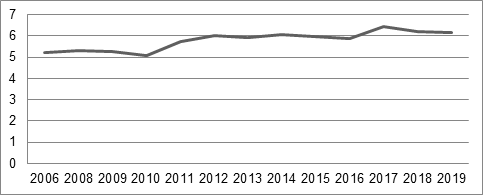
Source: World Happiness Report, 2020
The World Database of Happiness is an archive of research findings on subjective enjoyment of one’s life-as-a-whole based in the Erasmus University Rotterdam, the Netherlands. The findings related to happiness and life satisfaction are excerpted by Veenhoven (the founder of the database) and his team. Happiness indices are calculated based on self-reported survey questions: "Taking all together, how satisfied or dissatisfied you with your life-as-a-whole are these days?". The answer expresses life satisfaction on the 10 and 11 scales. Happiness trend is measured with a survey question like: "Suppose the top of the ladder represents the best possible life for you and the bottom of the ladder the worst possible life. Where on this ladder do you feel you personally stand at present?".
In 2018, the average happiness index for Uzbekistan was 6.2, and the life expectancy was 45.1 years.
Figure 2. Happiness Index in Uzbekistan (2002-2018)
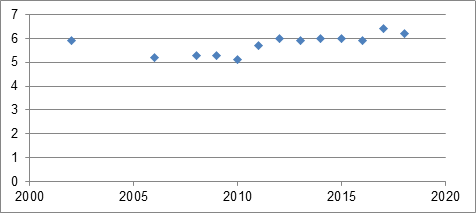
Source: World Database of Happiness, 2020
Figure 2 shows that the average happiness index was the highest in 2017.
Research Methodology
Data from the World Values Survey was used to analyze life satisfaction and the affecting factors in Uzbekistan. The World Values Survey has been conducted every five years since 1981 with more than 120 countries around the world. Data used in this study was collected from 1,329 respondents in 2011. Respondents self-reported the question: “All things considered, how satisfied are you with your life as a whole these days?” on a 1–10 scale.
Average life satisfaction/happiness levels are investigated according to age, income scale, number of children, health status, marital status, gender, education level, and employment status.
Life satisfaction and happiness by gender were reported in Figure 3. Findings show that men's happiness and life satisfaction levels are higher compared to women in Uzbekistan.
Figure 3. Life satisfaction and happiness by gender
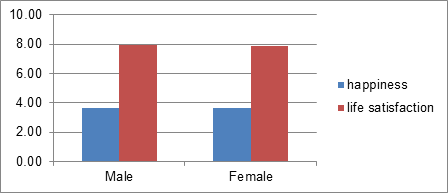
The age of respondents is categorized into four groups: 15–24, 25–39, 40–54 and above 55. Analysis of life satisfaction and happiness reported that 15-24 year-olds are the happiest and their level of life satisfaction is the highest. 55 year-olds are unhappiest, while 40-54 year-olds had the lowest life satisfaction score (7.67). The previous studies found U shaped relationship between age and happiness/life satisfaction.
A detailed analysis will be published in the journal Ekonomicheskoe Obozrenie in 2021 №3 (255)
Shoiraxon Nurdinova, PhD
Namangan State University
.

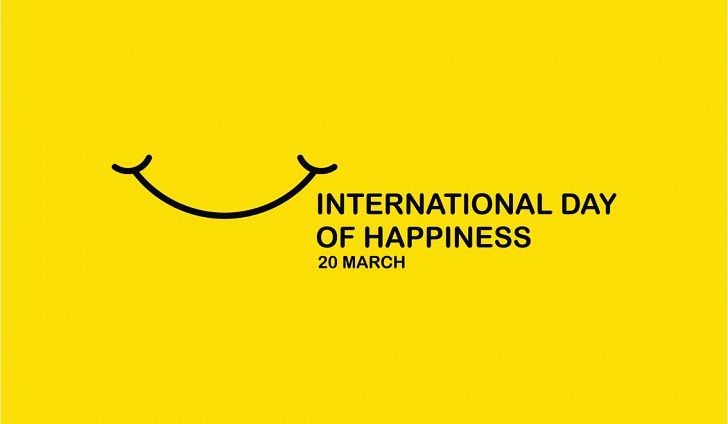
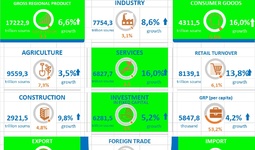
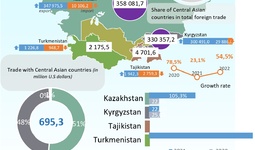
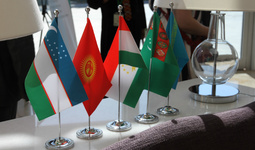
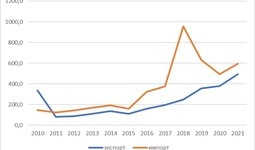
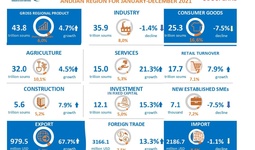
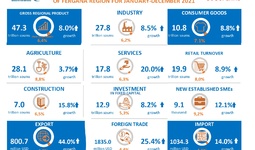













leave a comment